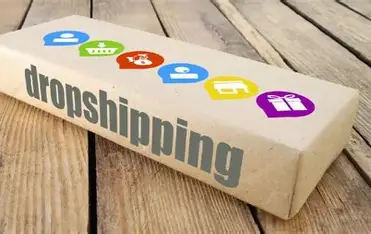Keeping your readers engaged is crucial for a successful blog strategy, especially on e-commerce platforms like Shopify. One powerful way to increase time spent on your website is by showing related blog posts in Shopify articles. Not only does this improve user experience, but it also boosts SEO, increases page views, and drives potential conversions.
In this comprehensive guide, you’ll learn various methods to add blog recommendations in Shopify, including manual methods, apps, and custom coding. Let’s dive into how you can effectively show related blog posts Shopify style.
Why Add Related Blog Posts in Shopify Articles
When visitors land on one of your Shopify blog articles, it means they are already interested in your content. By displaying related blog posts in Shopify articles, you offer them more value. This improves the likelihood that they will stay longer on your site.
Here are some benefits:
- Increases page views
- Reduces bounce rate
- Improves SEO performance
- Enhances reader engagement
- Drives more conversions by guiding users through a content funnel
Showing blog recommendations in Shopify is not just good for your readers, it’s smart business.
Methods to Add Related Blog Posts in Shopify Articles
There are multiple ways to integrate related blog posts Shopify feature into your store. Below are the most common and effective options.
Method 1: Manual Internal Linking
One of the simplest ways to show related blog posts in Shopify articles is by adding manual links within your blog content.
How to do it:
- When writing a blog, reference older posts by adding links.
- Use anchor text that is relevant to the linked blog.
- Include a “You might also like” section at the end of the article.
Pros:
- Simple and requires no coding
- Full control over which posts are linked
Cons:
- Time-consuming if you have many blogs
- No automation involved
This method is perfect if you have a smaller blog library or want full control over your recommendations.
Method 2: Use Shopify Apps
There are several Shopify apps designed specifically for showing related blog posts Shopify automatically. These apps use tags, categories, or AI to suggest content.
Popular Apps:
- Bloggle
- Related Blog Posts by Digital Darts
- Blog Posts Articles Filter Pro
Features:
- Automated suggestions
- Customizable display
- Easy integration
Pros:
- Saves time
- No coding required
- Scalable for larger blogs
Cons:
- May require a subscription
- Limited design customization in free versions
Using an app is one of the most efficient ways to offer blog recommendations in Shopify without much technical work.
Method 3: Add Custom Code to Your Theme
If you have access to your Shopify theme and are comfortable with basic coding, this method allows you to fully customize how related blog posts in Shopify articles are displayed.
Steps:
- Go to your Shopify admin panel.
- Navigate to Online Store > Themes > Edit Code.
- Open the “article.liquid” file or similar.
- Insert code that pulls posts from the same tag or category.
Example snippet:
{% assign current_tags = article.tags %}
{% for article in blogs.news.articles %}
{% if article.tags | intersection: current_tags | size > 0 %}
<div class="related-post">
<a href="{{ article.url }}">{{ article.title }}</a>
</div>
{% endif %}
{% endfor %}Pros:
- Full control over display
- No need for third-party apps
Cons:
- Requires coding knowledge
- Risk of errors affecting blog layout
This method is ideal if you want more control and already have a developer or some experience.
Method 4: Use Sections Everywhere (Shopify 2.0 Themes)
If your store uses a Shopify 2.0 theme, you can use dynamic sections to add related blog posts Shopify style right into your blog template.
How to set it up:
- Go to your Theme Editor.
- Open a blog article.
- Add a new section and select the blog posts widget.
- Configure it to show related articles based on tags or categories.
Pros:
- No code required
- Seamless visual integration
Cons:
- Limited by the theme’s available blocks
- Some customization may still require minor coding
Using sections in Shopify 2.0 themes is a user-friendly way to insert blog recommendations Shopify without relying on apps or custom code.
Best Practices for Displaying Related Blog Posts Shopify Style
Now that you know the methods, it’s important to follow some best practices to make the most of your related blog posts Shopify strategy.
Use Relevant Tags and Categories
For any automated method to work effectively, your blog posts need proper tagging. Use tags that describe the main topic of each post. Avoid over-tagging.
Keep the Design Clean and Consistent
Whether you use apps, code, or sections, make sure the layout matches your site’s design. A clean, consistent layout ensures that blog recommendations Shopify are visually appealing and not intrusive.
Limit the Number of Recommendations
Showing three to five related blog posts in Shopify articles is enough. Too many links can overwhelm the reader and distract them.
Test and Monitor Performance
Use tools like Google Analytics or Shopify’s built-in metrics to track clicks on related posts. This helps you fine-tune your related blog posts Shopify strategy.
Common Mistakes to Avoid
Even with good intentions, mistakes can happen. Here are things to watch out for:
- Using unrelated links that confuse the reader
- Overloading with too many posts
- Ignoring mobile responsiveness
- Not testing how posts appear on different devices
Avoiding these mistakes will ensure your blog recommendations in Shopify are helpful and effective.
SEO Benefits of Related Blog Posts in Shopify
Adding related blog posts Shopify style not only improves user experience but also has strong SEO advantages.
Reduced Bounce Rate
When users click on multiple articles, it sends positive signals to search engines.
Increased Page Views
More internal navigation means more impressions and chances of conversion.
Better Indexing
Internal links through blog recommendations Shopify help search engine crawlers index your content better.
Final Thoughts
Showing related blog posts in Shopify articles is more than just a nice design feature. It’s a powerful tool to increase engagement, boost SEO, and improve customer experience. Whether you go with manual links, apps, custom code, or Shopify 2.0 sections, the key is to keep it relevant, clean, and user-focused.
By following the strategies above, your blog will become more interactive, SEO-friendly, and effective at keeping readers engaged through well-placed blog recommendations in Shopify.





